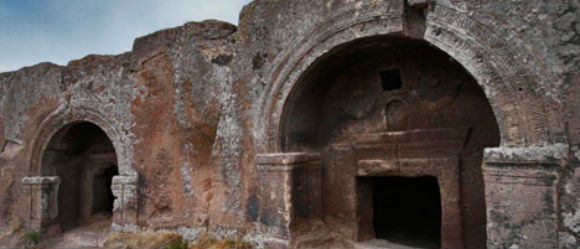Tubal may be present-day Kayseri, which is just north of Mt. Argaeus. It was part of the Hittite Empire, and as a settlement it dates back to 2500 B.C. Not far north of Kayseri are the Hittite ruins of Kanesh (Kül-tepe) where thousands of clay tablets business letters neatly written on clay, then baked, and then enclosed in neatly inscribed clay envelopes and baked again have been found with dates beginning about 1850 B.C. These are commercial records of Assyrian traders who lived outside the city walls and dealt in metalwork.
Along with the clay tablets, many cylindrical seals have been found there and elsewhere. These are like large beads and have a hole through the center so they could be strung on a cord and worn.
The use of these seals began in Mesopotamia and was brought to Anatolia by the Assyrians. There the native people adopted their use and Anatolian artists adapted local scenes. The seals served both as an identity card and an amulet. Many of them show the name of the owner and a prayer that the god whose form also appears will protect him. This kind of seal may be what Is referred to in the story of Tamar and Judah (Genesis 38:18). The custom of seals and amulets Is still observed in Turkey today.
Kanesh may be the capital, known as Nesa, of King Anittas which was important after Hattusas was destroyed. The town was burnt hence the name Kiiltepe (ash hill) during a war between two Hittite princes.
Tubal,
